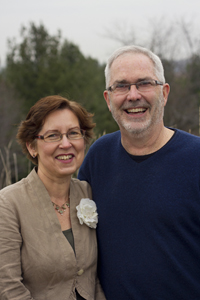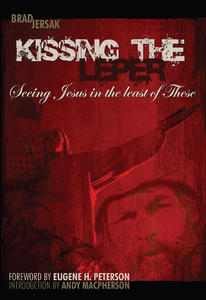BOOK REVIEW: Kissing the Leper by Brad Jersak
 VJN asked Pat Mulachy to review Kissing the Leper. Pat Mulcahy and his wife Lisa serve as the Lead Pastors of Vineyard Community Church in Grafton, WI, which they planted just over 15 years ago. Pat also serves on the Board of Directors for Rahab Global, providing support for the ministry of Rahab Foundation as it fights commercial sexual exploitation and the sex trade in Costa Rica.
VJN asked Pat Mulachy to review Kissing the Leper. Pat Mulcahy and his wife Lisa serve as the Lead Pastors of Vineyard Community Church in Grafton, WI, which they planted just over 15 years ago. Pat also serves on the Board of Directors for Rahab Global, providing support for the ministry of Rahab Foundation as it fights commercial sexual exploitation and the sex trade in Costa Rica.

It’s part of our heritage in the Vineyard to be those who reach out to and welcome the least, the lost, and the last. So we might be forgiven for reading the title, and especially the subtitle, of Jersak’s book, and think to ourselves, been there, done that. But as I delved into the stories and essays that comprise Kissing the Leper, I found my complacency challenged and my heart stirred. This is an eye-opening book.
Kissing the Leper is a collection of stories and essays by a variety of people who have practiced seeing Jesus in “the least of these.” The title comes from the story of Francis of Assisi, and a life-changing encounter he had with a leper. Some of the authors of this collection, like Henri Nouwen, are well known, while others are names not likely to be recognized. A good deal of the content comes from the first hand experiences of Brad Jersak, who for many years pastored Fresh Wind Fellowship in British Columbia. When Brad planted that church, God told him that the pillars of the church would be the disabled, the prodigals, the children, and the poor. And so it came to be.
Brad tells the story of Meghan, a young girl with autism who speaks into his life prophetically through both her words and her exuberant dance. Of Eddie, a man with Down syndrome, unable to read but through whom God works to highlight scriptures that speak to the church.
Then there is Kathy, also with Down syndrome, partially blind, confined to a wheelchair, and in constant pain, and who acts like a “lightning rod of God’s grace.” God’s love and grace flow through her into others like electricity. These and many others like them were active participants in the life of the church, and active participants and ministers when the church gathered to worship.
Some chapters describe Jesus being revealed in the midst of horrific circumstances. In one case He appears to a six-year-old girl suffering from the abuse of her step-parents. In another, Jesus is revealed through the selfless, risky love of missionaries working in the jungles of Asia.
But whether it is a pastor serving communion to a prostitute in a Winnipeg crack-house, or a young woman rescuing girls from sex-trafficking in Southeast Asia, each story describes encountering Jesus in the most unlikely of places and in the most unlikely of people when in one way or another the light of God’s love breaks through the darkness.
In the pages of this book we see children, the disabled, and those with very broken lives not simply as recipients of God’s ministry and grace. This isn’t simply about reaching out to them, or ministering to them, or merely including them. This is about seeing that Jesus really is in the least of these. The Holy Spirit really is as powerfully at work in and through their lives as He is through us who might be called “normal.” This is about recognizing all of that, and coming alongside those on the margins of society in such a way that we can receive from them, and experience God through them, at least as much as we give to them.
All too often the people described in this book are viewed primarily as a problem to be dealt with. They can be uncomfortable to be around, they have the potential to be disruptive of our orderly worship services, and they can require an enormous investment of time and energy.
While all that may be true, it is, to Jersak’s way of thinking, and to his experience, basically irrelevant. What he is advocating for is a wide open door to our churches. In fact, as Brad writes, “the church must relinquish control of the door altogether and get back to the task of issuing invitations in the byways and behind the hedges as per Jesus’ instructions. (Scary when you think who lives in those places – but only until you get to know and love them.)”
So how does that work in practice when you have several hundred people or more gathering together for worship? How do you maintain the balance of being a safe, welcoming place for everyone and also allowing for the disruptions and discomfort this type of openness could create? How do you practice this without freaking out your visitors?
Admittedly, the church where Brad was practicing this was fairly small, and committed from the beginning to this vision. But it’s difficult to imagine that the size or shape of our churches would give us a pass on this. All Brad is really saying is, we’re called to be like Jesus. We’re called to live and love like Jesus did.
Maybe that’s the key to maintaining the balance. After all, what could be more attractive, more winsome, and ultimately more safe than living and loving like Jesus? Kissing the Leper doesn’t provide us with specific next steps to implement. But it may just open our eyes and capture our hearts for where Jesus wants to lead us.
